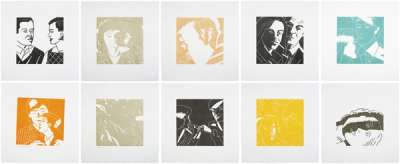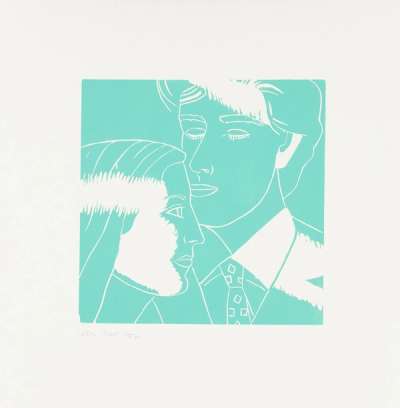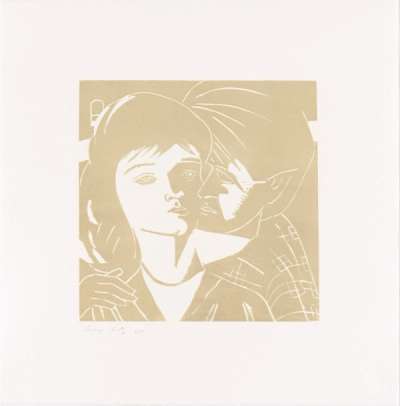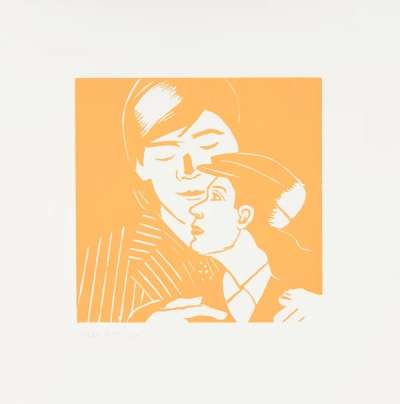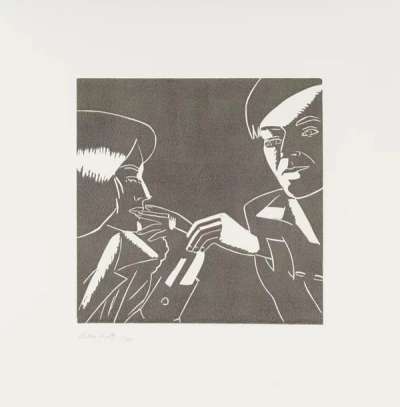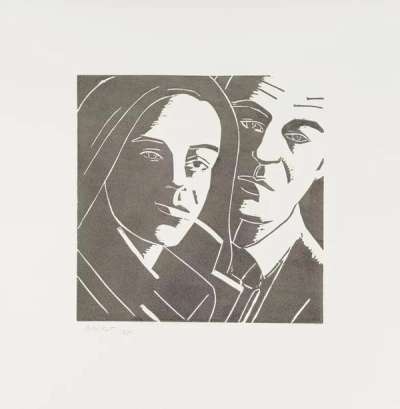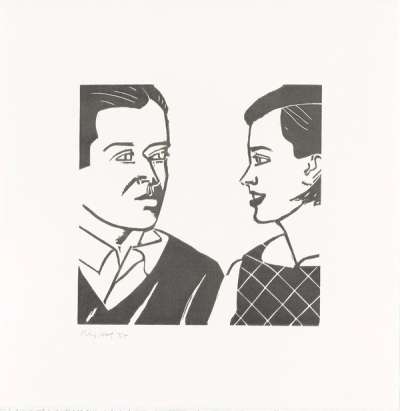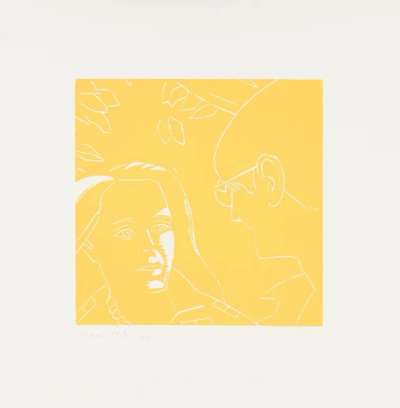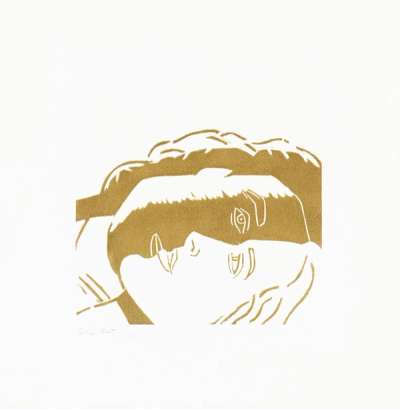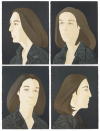A Tremor In The Morning
Alex Katz's A Tremor In The Morning series, produced in 1986, is a captivating collection of woodcut prints that portray intimate moments between couples. Through this series, Katz explores the dynamics of personal relationships with his characteristic flat, Pop Art aesthetics, offering a window into the quiet, shared experiences of each pair.
Alex Katz A Tremor In The Morning For sale
A Tremor In The Morning Value (5 Years)
Sales data across the A Tremor In The Morning series by Alex Katz varies by print. While standout works have sold at auction for up to £7423, other editions in the series remain rare to market or have yet to appear publicly for sale. Of those tracked, average selling prices have ranged from £650 to £6888, with an annual growth rate of 5.01% across available data. Collectors should note the discrepancy in performance between more visible and lesser-seen editions when considering value potential in this series.
A Tremor In The Morning Market value
Auction Results
| Artwork | Auction Date | Auction House | Return to Seller | Hammer Price | Buyer Paid |
|---|---|---|---|---|---|
A Tremor In The Morning (complete set) Alex Katz Signed Print | 1 May 2025 | Doyle Auctioneers & Appraisers | £5,525 | £6,500 | £8,500 |
Sell Your Art
with Us
with Us
Join Our Network of Collectors. Buy, Sell and Track Demand
Meaning & Analysis
A Tremor In The Morning series by Alex Katz is a profound exploration of relational dynamics and shared intimacy, rendered through the bold medium of woodcut prints. Each piece within the series captures a moment of connection or contemplation between couples, employing Katz's signature flat planes of colour and clean lines to evoke a sense of immediacy and clarity. The inclusion of the artist and his wife among the subjects adds a personal dimension to the series, blurring the lines between observer and participant, and inviting viewers to reflect on the nature of companionship and mutual understanding.
Katz's approach to these portraits, with their reductive aesthetics and emphasis on form and colour, aligns with the broader Pop Art movement's fascination with popular culture and everyday imagery. In this series Katz focuses on the subtle, often overlooked moments of personal interaction. The series' title, A Tremor In The Morning, suggests a moment of vulnerability or awakening, further emphasizing the emotional depth and resonance of these seemingly straightforward depictions.
The use of woodcut printmaking adds texture and depth to the series, with the medium emphasising the contrast between light and shadow, line and form. This choice of printmaking underscores Katz's commitment to exploring the possibilities of printmaking and his interest in the interplay between traditional techniques and contemporary subjects.
